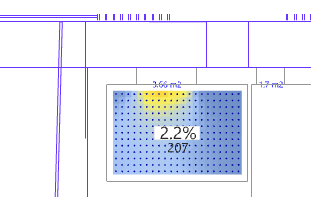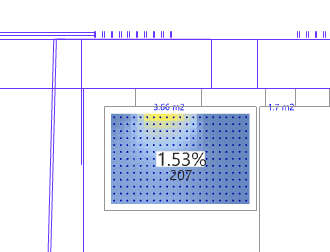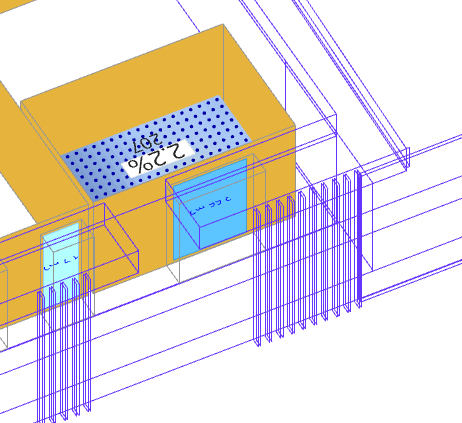Hi there,
I am writing with a certain degree of discomfort as my colleagues and I have discovered some rather worrying discrepancy between daylight results obtained when the same model is run on 2 separate PCs, both have the same Honeybee and Radiance versions installed.
PC1 has a powerful graphic card and accelerad installed.
PC2 is a medium power PCs without accelerad installed, thus uses CPUs to run the simulation.
( as a further check I ran the same model on PC3, a laptop with same configuration as PCs 1 and 2, and the results converge with those obtained with PC2)
Other than causing crashes and requiring Nvidia software update, I ran a sample analysis on ONE individual room with the 2 PCs to provide for a (glaring) comparison.

Results with PC1

Results with PC2
Scene includes a number of complex shading as per image below:

Radiance Parameters( HB Detail Level High) = -aa 0.1 -ab 6 -ad 4096 -ar 128 -as 4096 -dc 0.75 -dj 1.0 -dp 512 -dr 3 -ds 0.05 -dt 0.15 -lr 8 -lw 0.005 -ss 1.0 -st 0.15
1 Like
Hey @andrea.botti, might be worth sharing on the Radiance discourse and seeing if Nathaniel Jones can input.
Hi @andrea.botti,
I don’t have background on what type of simulation you are running, but given the complexity of your shading device, your simulation settings are probably not accurate enough. I think you will need a higher ad, lower lw, and possibly a larger ar depending on the size of your model. In general, you should keep lw < 1/ad.
In stochastic ray tracing, you can never expect to get exactly the same results from two different runs. You should be aware that Radiance and Accelerad perform irradiance caching differently. In Radiance, you need to run an overture pass to produce smooth ambient lighting, and if you do not, then your results will be biased toward whatever ambient values were calculated first. In Accelerad, the overture is implicit and doesn’t need to be carried out as a separate step, but there are additional ambient parameters to be considered. You might want to turn off irradiance caching with aa=0 to get a more accurate comparison.
4 Likes


